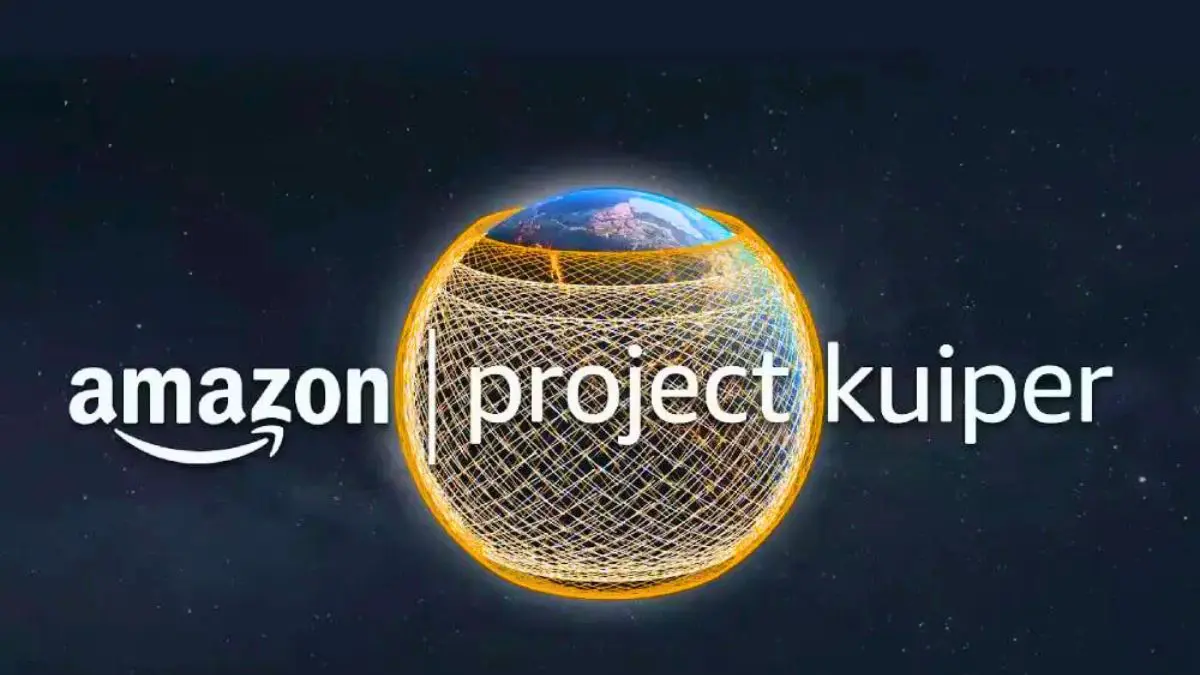Amazon begins Kuiper rollout with ULA satellite launch
29 Apr 2025

As dusk settled over Florida’s Space Coast, United Launch Alliance (ULA) launched the first batch of Amazon’s production-ready Kuiper satellites, signaling a pivotal step in the tech giant’s push into satellite-based internet services. The Atlas 5 rocket, bolstered by five solid-fuel boosters, lifted off from Cape Canaveral’s Space Launch Complex 41 at precisely 7:01 p.m. EDT, carrying 27 satellites into low Earth orbit.
This deployment is a key milestone in Amazon’s Project Kuiper—an ambitious effort to build a global broadband network that can compete with existing players like SpaceX’s Starlink. While minor weather-related adjustments nudged the launch time slightly, conditions ultimately proved favorable. ULA used its most powerful configuration of the Atlas 5 (the 551 variant) to accommodate the mission’s heavy payload.
The mission is the first of eight contracted Atlas 5 launches Amazon has secured with ULA for Kuiper satellite deployment. However, timelines are fluid. ULA CEO Tory Bruno, speaking at the recent 40th Space Symposium, acknowledged that completing all eight missions this year may not be feasible, noting that some may extend into 2026 due to evolving operational priorities.
Amazon’s launch strategy goes far beyond ULA. The company has locked in 38 launches aboard the next-generation Vulcan rocket, also operated by ULA, along with a combined 33 launches on Ariane 6 (Arianespace), New Glenn (Blue Origin), and Falcon 9 (SpaceX). The next Kuiper payload aboard a Vulcan rocket—expected to carry 45 satellites—is tentatively scheduled for late summer, following two missions supporting U.S. national security.
With an end goal of deploying 3,236 satellites, Project Kuiper aims to deliver low-latency, high-speed internet to underserved regions as well as strategic clients. “We’ve engineered every component of this network in-house—from propulsion systems and solar arrays to antennas and optical links,” said Rajeev Badyal, VP of Technology for the Kuiper Satellite Network, in a recent video update.
This marks Amazon’s transition from prototype to production. In October 2023, the company launched two test satellites to evaluate performance and finalize system designs. Now, with full-scale deployment underway, Amazon is racing toward the regulatory threshold set by the FCC, which requires 578 operational satellites before customer services can begin.
These satellites will orbit at altitudes of 590 km, 610 km, and 630 km, spread across 98 orbital planes. For context, that’s well above the International Space Station, which typically orbits between 370 and 460 km. The staggered configuration is designed to ensure global coverage and minimize latency.
In addition to serving consumers and enterprises, Amazon has carved out a separate government-focused division. Kuiper Government Solutions (KGS), established as a distinct entity, is tasked with delivering secure, satellite-based communications to defense, intelligence, and public sector agencies. On Monday, KGS announced a new partnership with L3Harris Technologies aimed at offering integrated, mission-critical communications using Kuiper’s satellite backbone.
“The collaboration between KGS and L3Harris will enable seamless interoperability and deliver secure, adaptable communications for military, emergency response, and other specialized operations,” said Sam Mehta, President of Communication Systems at L3Harris. He emphasized the growing need for resilient and flexible networks that traditional infrastructure often cannot provide.
Summary
Amazon’s Project Kuiper made its first major deployment leap with the launch of 27 full-scale satellites aboard ULA’s Atlas 5 rocket. With plans to offer broadband service after reaching 578 satellites, the long-term vision is far broader: over 3,200 satellites forming a global network. Backed by a multi-provider launch strategy and a dedicated government services unit, Kuiper is positioning itself as a serious contender in both commercial connectivity and secure satellite communications.
FAQs: Project Kuiper and Its Business Impact
Q1: What is Project Kuiper?
Project Kuiper is Amazon’s satellite internet initiative aimed at deploying a constellation of over 3,200 satellites to provide global broadband connectivity, especially in underserved regions.
Q2: How does it compare to SpaceX’s Starlink?
Like Starlink, Kuiper will offer low-latency, high-speed internet from low Earth orbit. However, Amazon is taking a multi-provider launch approach and is developing a separate government-focused division, potentially widening its strategic footprint.
Q3: When will Kuiper internet service become available?
Amazon plans to begin customer service once it has at least 578 operational satellites in orbit, as required by the FCC. This could happen as early as 2025, depending on the launch cadence.
Q4: Who are the launch partners for Kuiper?
In addition to United Launch Alliance (ULA), Amazon has secured launch contracts with Arianespace (Ariane 6), Blue Origin (New Glenn), and SpaceX (Falcon 9), ensuring flexibility and redundancy in its deployment schedule.
Q5: What is Kuiper Government Solutions (KGS)?
KGS is a legally separate Amazon entity focused on secure satellite communications for military, public safety, and government agencies. It recently partnered with L3Harris Technologies to co-develop integrated communication systems.
Q6: What does this mean for Amazon's broader business strategy?
Project Kuiper extends Amazon’s footprint into space and telecommunications, opening new revenue channels and positioning the company as a tech infrastructure provider—not just a consumer marketplace or cloud platform.






















